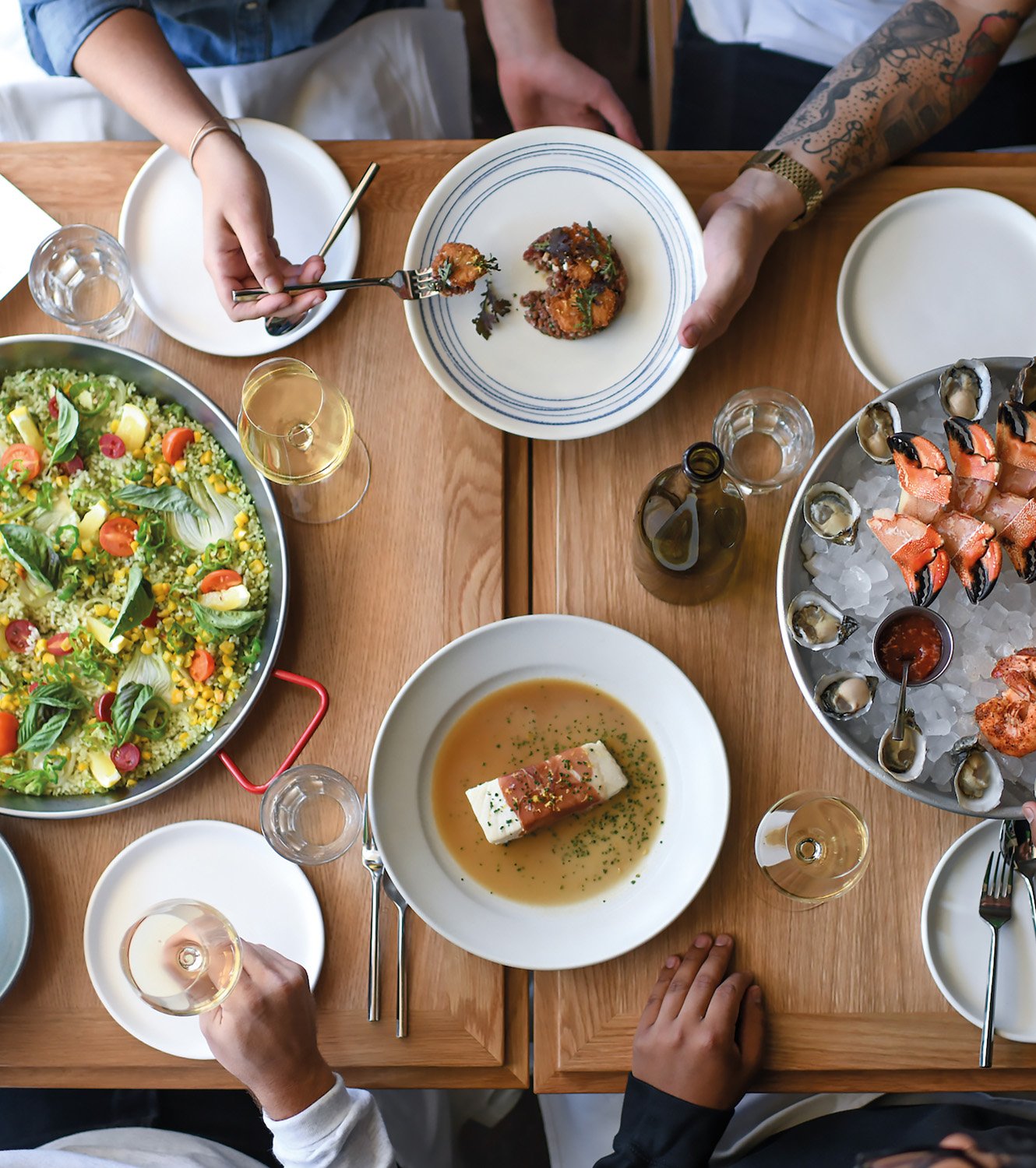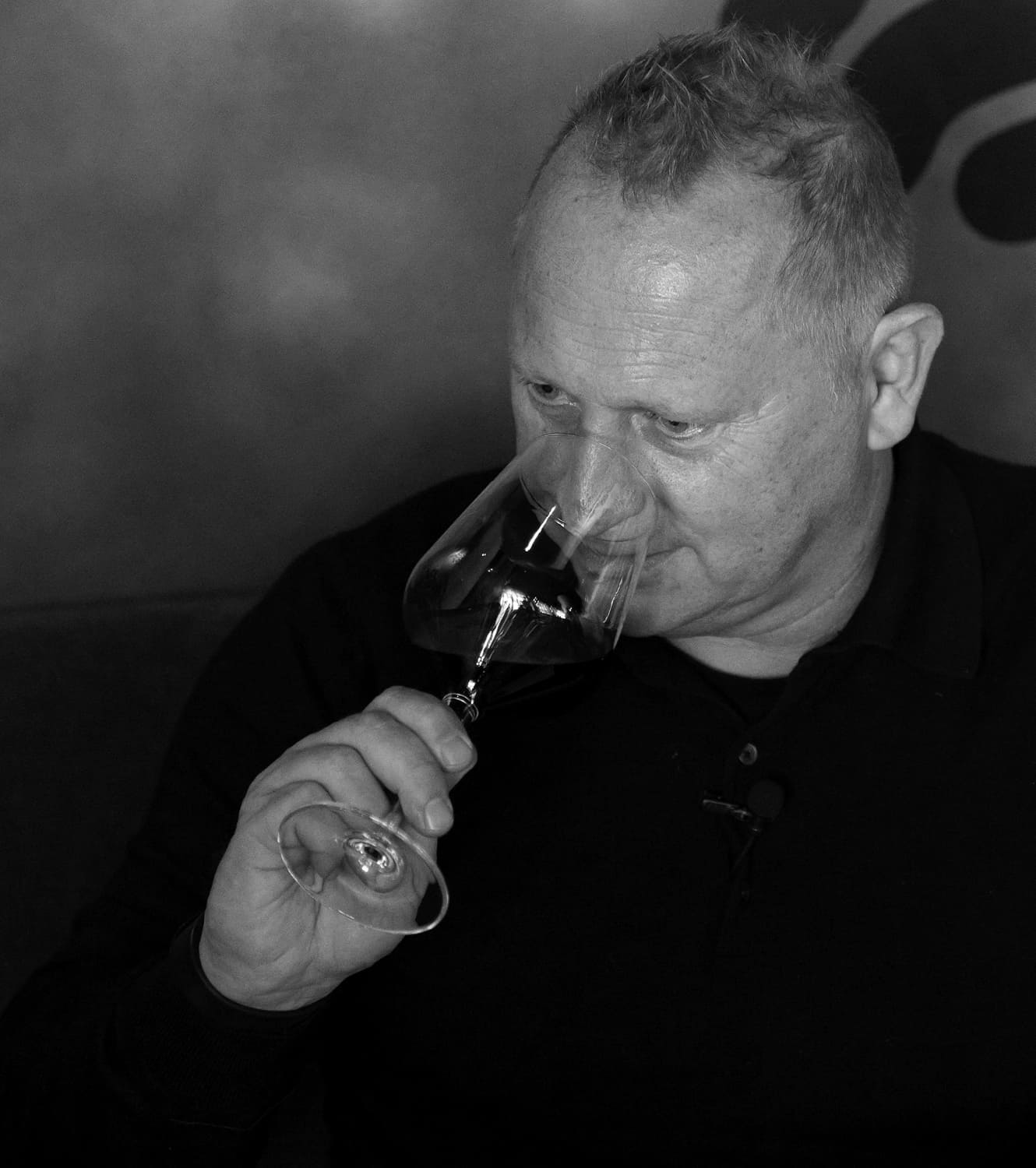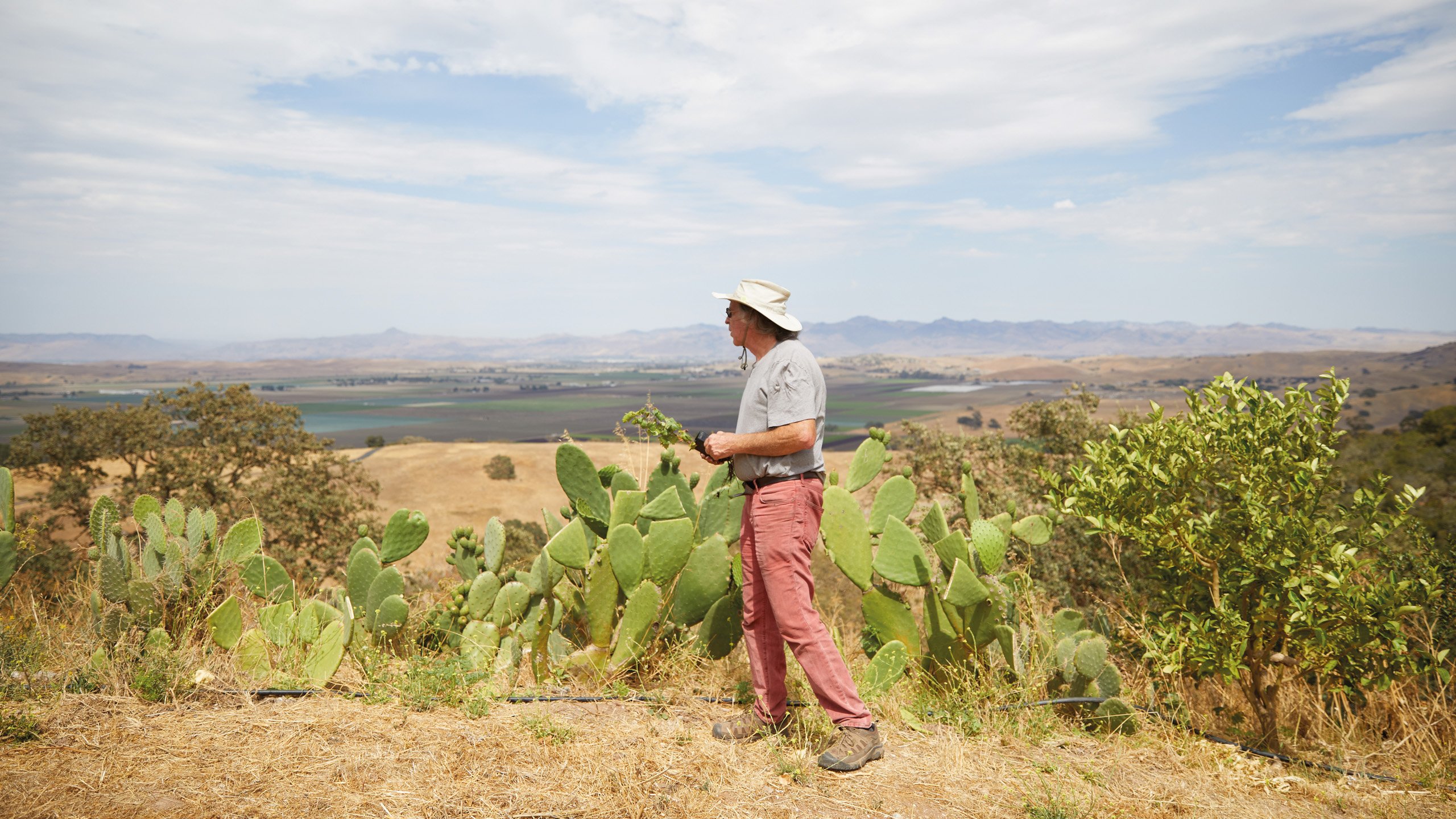
UNSUNG HERO
Randall Grahm, one of California’s more innovative vintners, shares his thoughts on the much underrated Rossese/Tibouren variety, and his pioneering outlook for The Language of Yes and Popelouchum
I am a contrarian to the core and when the crowd is moving in one direction, I am generally headed in the opposite one; I’m in with the “out crowd, ugly duckling.” Grapes are my métier, my schtick. More than 20 years ago I put this temperamental disposition into practice by introducing a line of wines which I imported under the aegis/marque of Il Circo – Italian wines made from obscure, oddball grapes that were generally undervalued and under-appreciated. As part of my research, I was lucky enough to spend some time with Luigi Veronelli, editor of Gambero Rosso, and asked him about the truly unheralded, genius Italian wine grapes. Signor Veronelli was kind enough to share with me his thoughts on what was presumably his favorite subject; if memory serves, perhaps highest on his list was a rather obscure, very old variety called Rossese di Dolceacqua, grown on terraced vineyards not far from Genoa in Liguria. Veronelli was incredibly generous to offer his assistant, Daniel Thomases, to act as my escort and interpreter, arranging visits to some top producers. I spent the day with Daniel, visiting maybe five domaines; I confess that at the time I was unable to truly grok the genius of the variety at all. The wines (all red) were for the most part fairly light in color, seemingly light in body, high in acid and slightly herbaceous; the grape’s charms were subtle at best.
Rossese is indeed a lot more like Pinot Noir than like, say, a dense Sagrantino; I had been thinking fast ball and was served up perhaps a knuckler. Chalk it up to a still relatively immature palate, or possibly to one that worried o’er much about how a subtle wine would play in Peoria to those who needed the reassuring qualitative imprimatur of density and imminent power. Still, I suspected there was something interesting going on, but it was something that I would have to revisit down the road. I can’t really discuss the details of how it happened but somehow I found myself gifted with a few sticks of Rossese budwood; I put them in my vine collection and pretty much forgot about them for quite a while.
Change of heart
In the intervening years, my palate seems to have matured slightly and I began to gain an appreciation for wines that were not so dense and certainly not over-extracted, wines that were “agile,” capable of movement or evolution in the glass. About ten years ago I found myself at Marea restaurant in New York City, and something possessed me to order a bottle of Rossese di Dolceacqua. It was from Maccario Dringenberg, although I’ve failed to remember the specific vineyard. But, the wine was just a revelation as far as its elegance and complexity. The stars had realigned. This was a quasi-Burgundian wine conveniently not composed of that pesky Pinot Noir.
I became obsessed with my rediscovery and began tracking down as many Rossese bottles as I could find – not so easy to find as it turned out. There was a brilliant article by Andrew Jefford which appeared in Decanter in 2015, titled “Rossese, A Wine Made by Empty Spaces,” in which he argues that Rossese may well be a grape that satisfies the insatiable Burgundian itch, in part due to its flavor geometry, if you will. The “empty space” is not the physical geography that separates the steep hillside plantations one from the other, but rather the spaciousness of the wine itself on the palate, and its ability to move through that gustatory space the way a musical note persists through the silence of the unplayed notes. I imagine Rossese as perhaps the Miles Davis of grapes.
Same difference
At about the same time, I had developed a small, controllable dependency on Clos Cibonne rosé (and red, to some extent), as any Bay Area would-be wine hipster does. This was a different grape from a different part of the world, Tibouren from Provence. I especially loved their old vine offering, Cuvée Spéciale des Vignettes. Somewhere in this time frame I had the occasion to spend some time with Andrew Jefford and he delivered to me a bombshell that rocked my world: Rossese di Dolceacqua and Tibouren were in fact genetically identical. It was a bit like finding out that you had two friends who knew each other independently of yourself and happily enough, got along famously. Phew!
Here are some of the differences I perceive between Tibouren and Rossese, at least understood from where they are traditionally grown: Tibouren is found in somewhat warmer and dryer sites than Rossese and there may well be some clonal differences between them. Tibouren, as a red wine, is to my palate somewhat more “rustic” than Rossese, typically richer in body and in alcohol, with slightly lower acidity. It is said that Tibouren is a superb vehicle for the transmission of ambient flora, known locally as garrigue. My sample size (of one) is not scientifically significant but one feature I did happen to observe of the Tibouren at Clos Cibonne was the pretty radical disparity of ripeness between bunches and even within the bunches themselves. Rossese grown in Paso Robles, San Juan Bautista or Liguria, does not seem to share this same tragic flaw to nearly the same extent.
While most certainly the aromatic terpenes of ambient vegetation both in Provence and Liguria play a role in the unique character of Tibouren/Rossese, it’s also quite possible that the presence of pyrazines from less than totally ripe fruit might also play a role. I’ve noticed that the slight herbaceousness of red Clos Cibonne, especially in greener years, seems to morph into a wonderful mintiness with the passage of time. It’s just an impression but I imagine that Rossese has slightly more spaciousness, as described by Jefford, in its palate as compared to Tibouren. As in a musical rendering, fewer notes are played but they echo and play with one another, conveying depth and resonance.
“I imagine Rossese as perhaps the Miles Davis of grapes. It has the ability to move through the gustatory space the way a musical note persists through the silence of the unplayed notes”

The Language of Yes location maps and Randall's viticulture
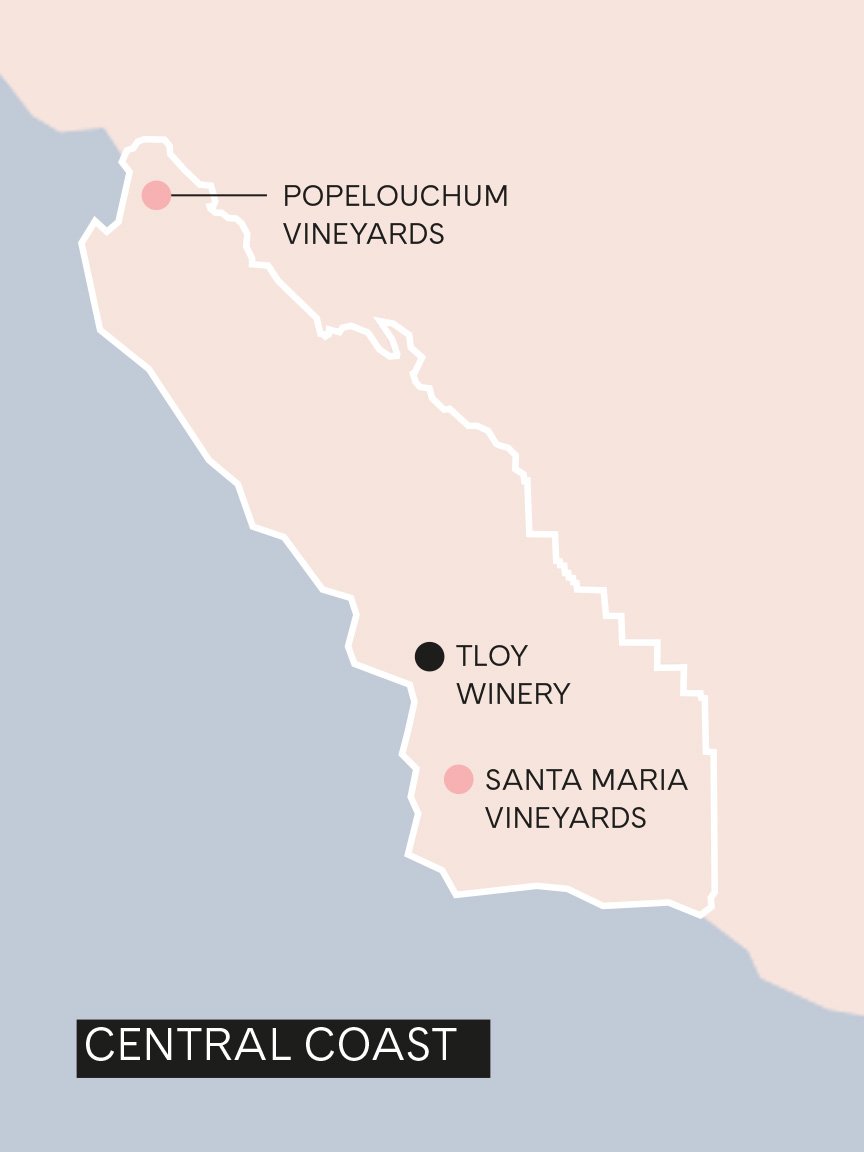
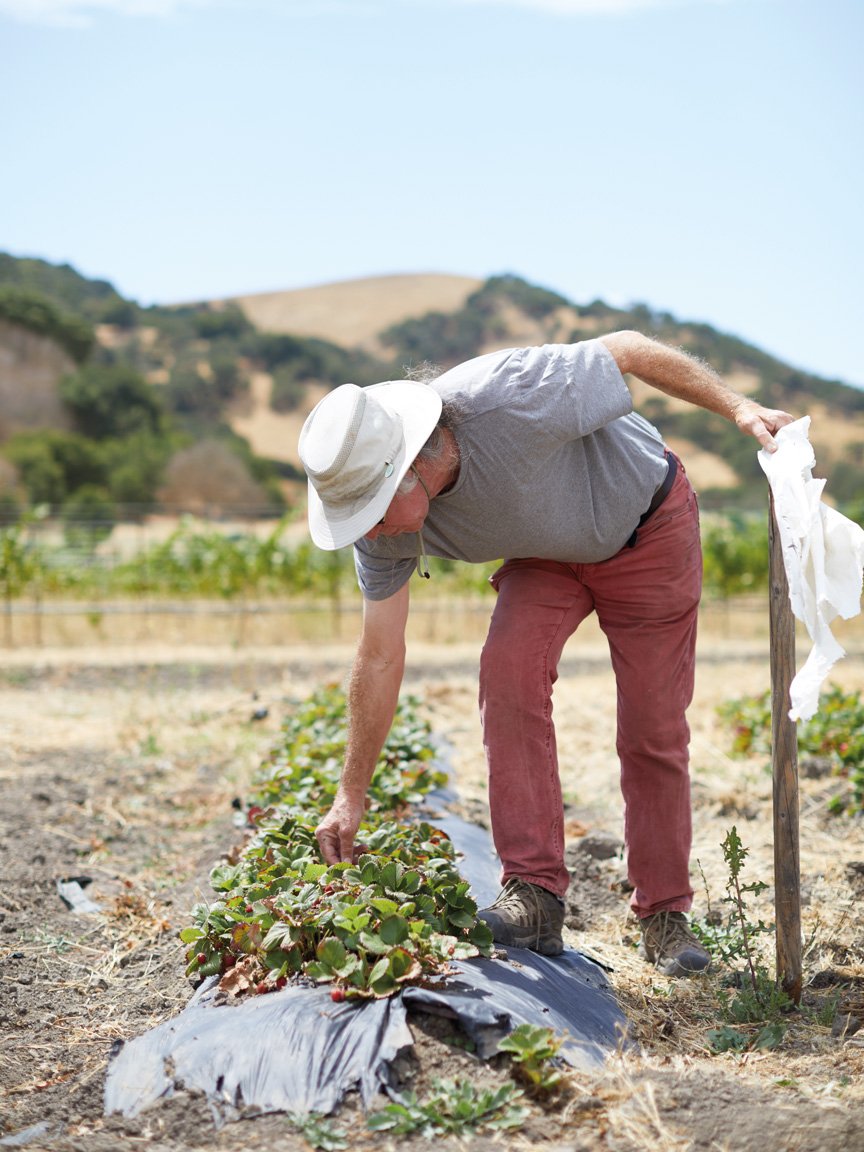

Gift of graft
My experience of Tibouren/Rossese in California has been enormously encouraging and I feel that I’ve experienced still but a glimpse of its immense potential. I was able (amazingly) to persuade a grower friend of mine to initially graft an acre of Tibouren in the El Pomar District of Paso Robles. Rather warm and very dry during the day, cool at night, with beautiful calcareous soils – not so dissimilar to, ahem, other places where Tibouren is grown. We grafted Tibouren/Rossese on some frankly pretty distressed 30-year-old Sangiovese vines, ones that had all sorts of “issues,” leading to somewhat borderline productivity, compromised root system, somewhat uneven ripening (likely non-genetic in origin), etc – in short, a bit of a mess.
And yet despite the numerous challenges of this particular site, the grapes it yielded produced the most stunning pink wine I had ever experienced in California. The color of the fruit – nothing to write home about. Many bunches failed to properly color up at all. But there was a quality to the wine that I can only describe as possessing a kind of life-force, a dramatic savoriness and persistence of flavor as it evolved in the glass. The fragrance, while discreet, was haunting – almond and cherry blossoms in particular. Oh, to be able to sip this wine in Kyoto in springtime.
Warmer climes
Under The Language of Yes brand [a collaboration between Randall and Joe C. Gallo, the founder of Maze Row], I’ve now made three commercial vintages and the Tibouren, blended with a lesser volume of Cinsault and occasionally Mourvèdre, has consistently amazed and delighted me. We’ve allowed the wines to go through malolactic fermentation, so that they may be bottled without the need for filtration, preserving their remarkable texture and impressive finish. The scant production comes from two acres of ruinously shy-yielding Tibouren planted at Paso Robles, and those vines are likely not too much longer for this world.
But, entretemps, after numerous and exhaustive Rossese/Tibouren dinners with corporate management, what I mean is, after additional comprehensive, in-depth research, I have been able to persuade my colleagues at The Language of Yes of the unique beauty and potential
of the variety in California, especially in younger, healthier and slightly cooler vineyard sites. We were able to locate such a vineyard, not far from King City and grafted approximately two acres this last spring with an additional 2.5 acres to graft this coming spring. The vines are proving to be remarkably vigorous and healthy. I expect them to produce on the order of 25 tons of fruit when they are fully bearing, which will be just a few short years away.
Why do I imagine that this relatively small planting of Tibouren will be interesting for the wine industry in general? We have in recent years been experiencing the dramatic effects of global climate change everywhere and California has certainly not been spared. Moderate and cool sites on the Central Coast, once suitable for producing elegant varieties like Pinot Noir, are often moderate and cool no more. Put another way, what do you do if you are determined to produce wines of elegance and balance from varieties that were once capable of delivering the goods, but perhaps are no more?
Conversely, Tibouren is a variety, as is perhaps Cinsault, that I believe is capable of producing a particularly haunting and elegant wine in a relatively warm climate. It appears, as does Cinsault, to be relatively drought tolerant as well. Maybe equally germane is the fact that the wine world is getting smaller and consumers everywhere have the new opportunity to try wines made from exotic grapes they’ve never seen before. Yes, there has been a great consolidation of large and mid-size producers and wine distributors and wine shelves and lists are crowded with familiar faces, but I suspect that has created a counter-demand for the less common styles, for the heterodox. At the end of the day, there is always a place for wines of unique personality and distinction.
Testing ground
I’m growing Tibouren at my own Popelouchum vineyard in San Juan Bautista as well, just a modest plantation of a little over an acre but at the same time I’m doing something utterly unique with the variety. I’ve harvested several thousand seeds from self-crossed Tibouren to see if I might not come up with an interesting variant that may well be better to our growing conditions than its parent. At the same time, I’m toying with the hypothesis that genetic variants of a given variety, even if they are in some sense “inferior” to their parent, may enable one to potentially create additional nuance and complexity in a field blend.
The “best” clone of a given variety might well be a composite of many biotypes or variants of that variety. The notion of a heterogeneous planting, which flies in the face of conventional viticulture with its emphasis on uniformity, may afford a unique opportunity for the observation and selection of unique individuals with particularly useful traits – drought or heat tolerance, superior (or complementary) taste profile. But, most significantly, it allows one the opportunity to observe and learn and ultimately select for the future, as not all viticultural knowledge is vouchsafed upon cursory inspection.
It is my hope that Popelouchum can serve as a laboratory for The Language of Yes, exploring not just new varieties (or heterogeneous combinations thereof), but the implementation of new and progressive grape growing and wine-making methodologies – from the use of biochar and inoculated cover-crops (as a means of enhancing the biotic potential of soils) to experimentation with the air-drying of grapes to lignify stems, thus allowing for superior structure in the wine and improved fermentation kinetics.
At Popelouchum, we are in the process of creating/discovering entirely new and unique varieties through the somewhat tedious but time-tested conventional grape breeding process, grapes bred not to solve a particular winemaking or viticultural problem, but rather in the hopes of discovering something strange, new and beautiful. It is my hope that at least one of these varieties might find a home in The Language of Yes. (How could anyone say “no?”)
Learn more about The Language of Yes and the wines.

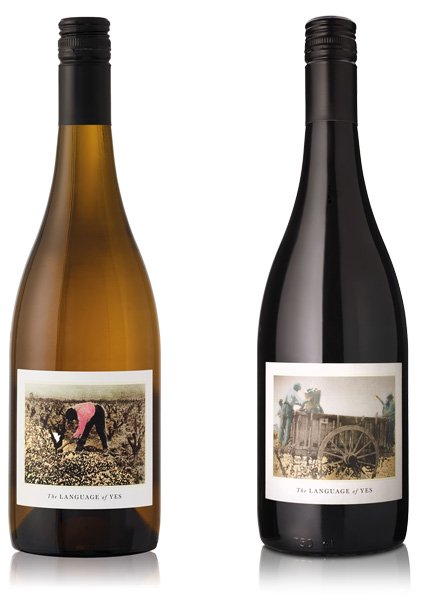
A SELECTION OF THE LANGUAGE OF YES RELEASES
The Language of Yes Syrah 2021
Co-fermented with 14 percent Viognier, The Language of Yes Syrah is aromatic and high-toned, reminiscent of St. Joseph, but with a piney blue-fruited boost given by its California provenance. Remarkable for its drinkable restraint.
The Language of Yes Pink Wine “Le Cerisier” 2021
A blend of Tibouren, Cinsaut, and Mourvèdre with a little bit of skin contact, this pale-pink wine is rich with aromas of stone fruit and flowers with a textured, creamy palate and a salty finish. Decant before serving.
The 2021 vintage released a rose, the Pink Wine (left), a red, the Syrah (right)
We recommend
NEW RADICAL: INTERVIEW WITH RANDALL GRAHM
The pioneering vintner’s passionate belief in vin de terroir has guided his journey to craft wines of distinction and a clear expression of California’s Central Coast through The Language of Yes
TASTING THE LANGUAGE OF YES WITH RANDALL GRAHM
With the focus at The Language of Yes firmly on producing small quantities, but with big ideas, the 2020 vintage released two reds, the Syrah and Grenache, and the Pink Wine rosé. The winemaker shares his personal notes on the wines and possible pairings
SIPPING IN THE SUNSHINE
When in California, it’s best to go nowhere fast, suggests Jillian Anthony. Take a leisurely road trip from LA to Santa Cruz, then stop off at Napa for a heavy pour of wine country
A PERFECT BLEND
Chotto Matte specializes in Nikkei cuisine, a Peruvian and Japanese invention shaped by movement and migration. But how to pair with wine? Nargess Banks sits down with the founder, Kurt Zdesar, to explore



